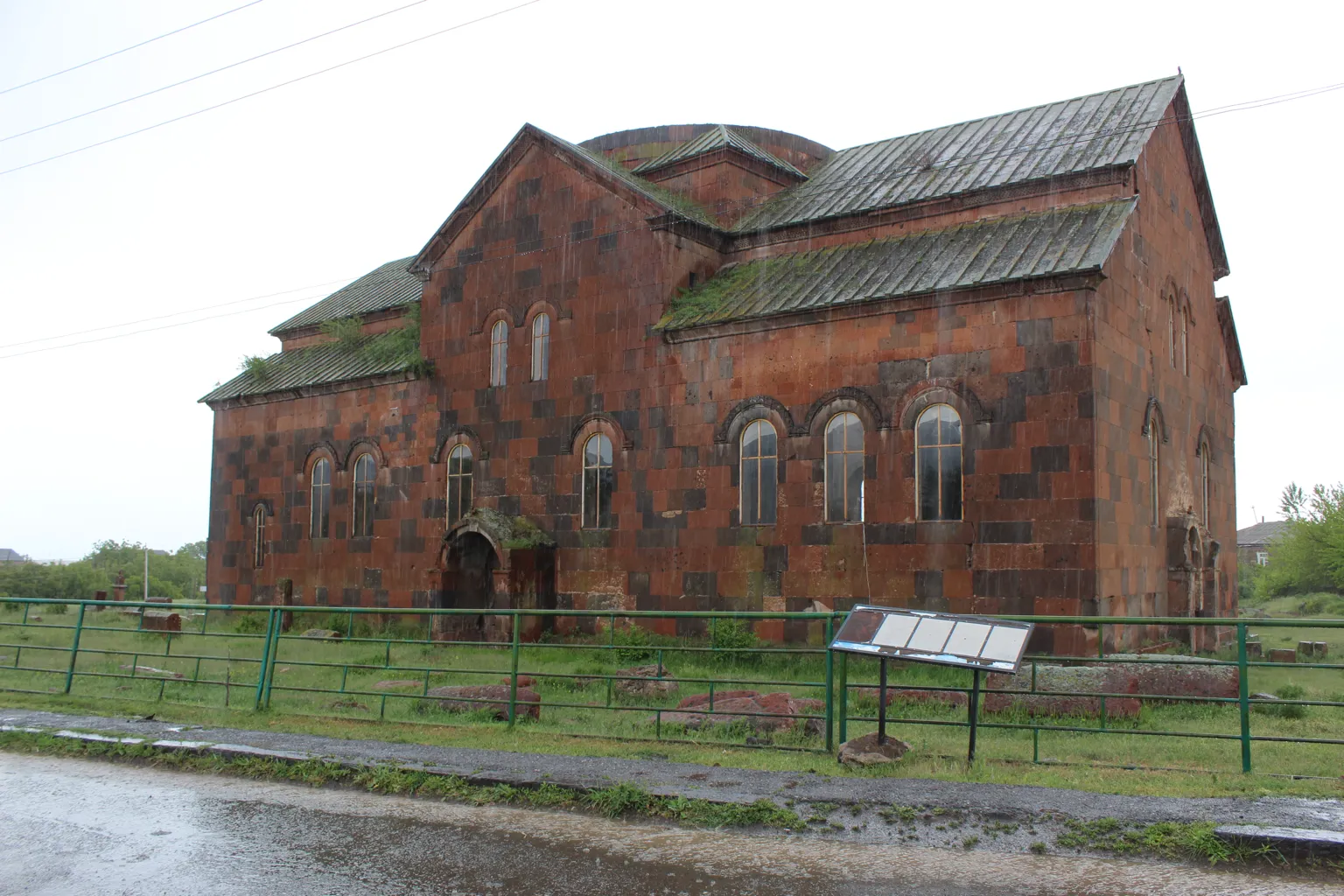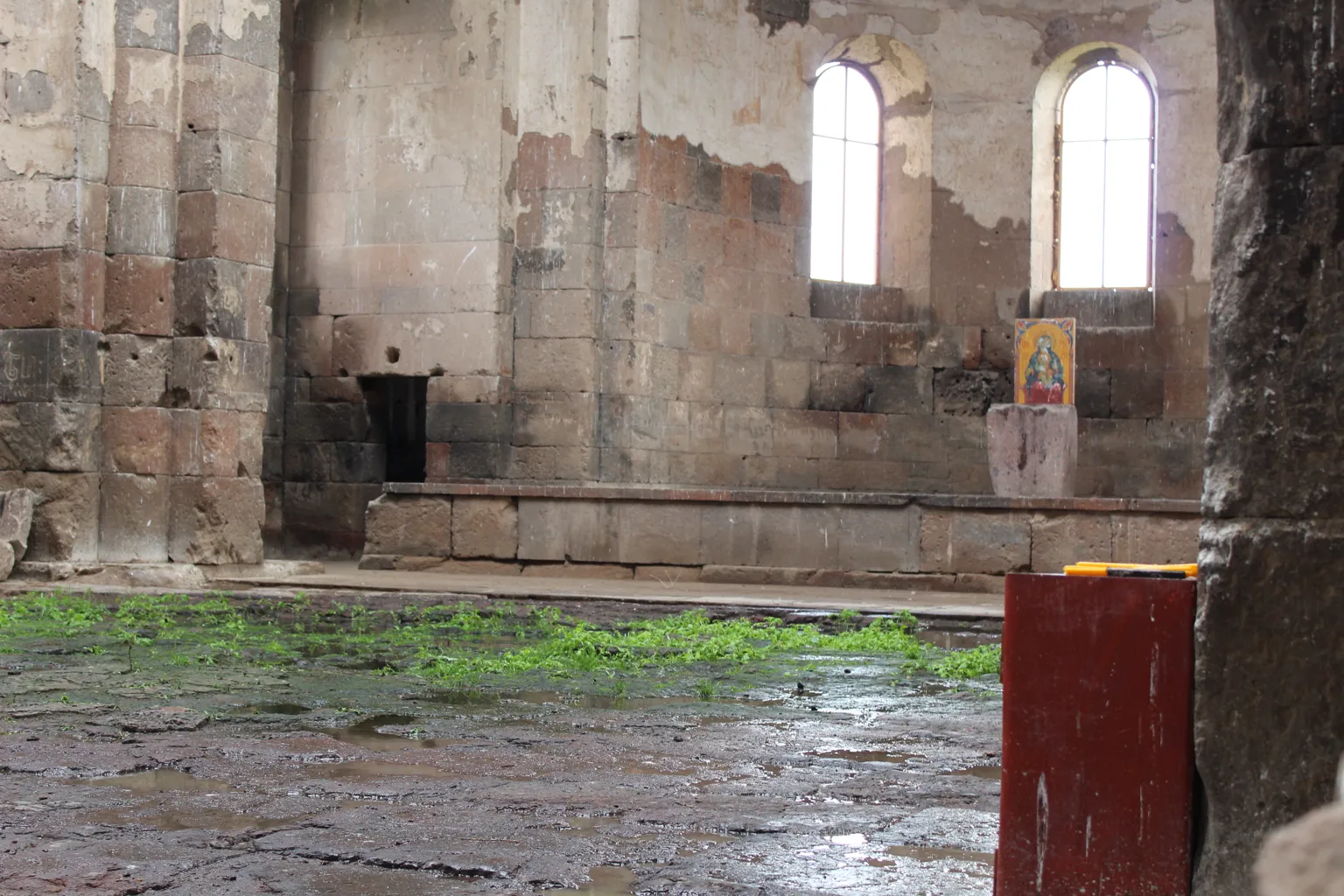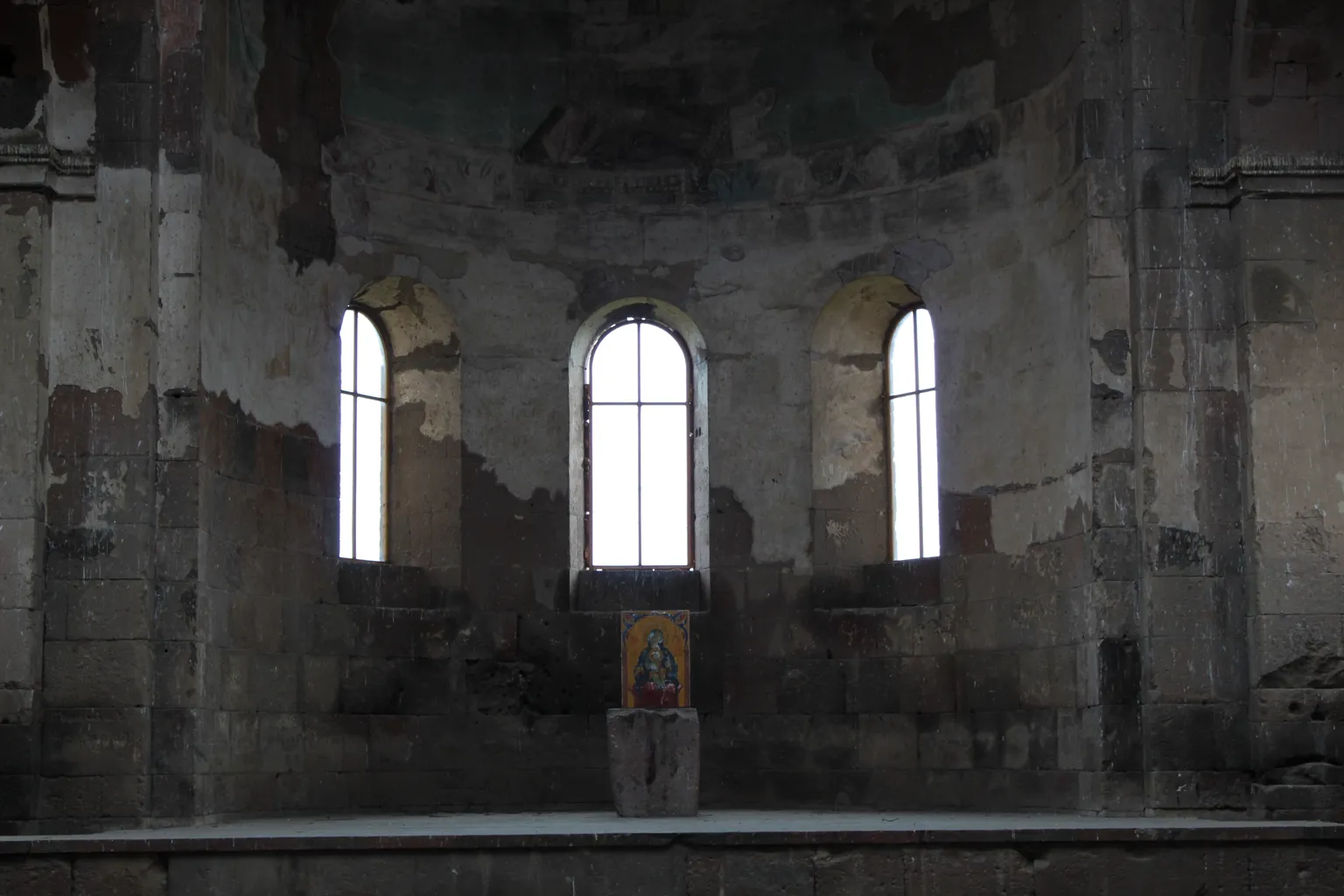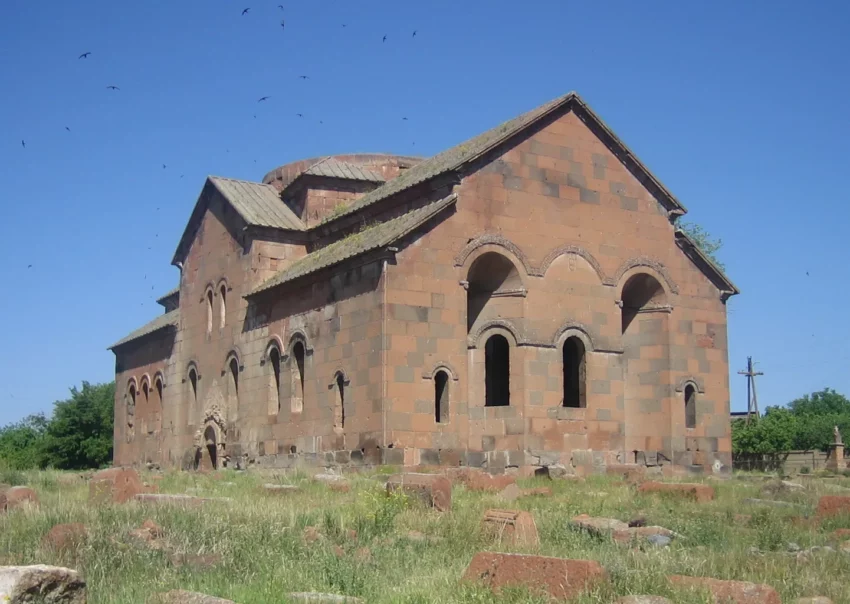Aruchavank: An Architectural and Historical Analysis
Aruchavank, also known as the Cathedral of Aruch, stands as a significant monument in Armenian history. Located in the village of Aruch in the Aragatsotn Province of Armenia, this cathedral offers a glimpse into the architectural and cultural developments of the early medieval period.
Get your dose of History via Email
Historical Context
Aruchavank dates back to the 7th century AD. The construction of the cathedral began under the patronage of Prince Grigor Mamikonian, a prominent figure in Armenian history. The Mamikonian family played a crucial role in the political and military affairs of Armenia during this period. The cathedral’s construction likely started around 661 AD and concluded by 682 AD.

Architectural Features
Aruchavank exemplifies the Armenian architectural style of the early medieval period. The cathedral features a domed basilica design, which was common in Armenian church architecture. The structure includes a central nave, two aisles, and an apse. The dome, supported by pendentives, rests on a square base, a characteristic feature of Armenian ecclesiastical architecture.
The use of stone as the primary building material reflects the local construction practices. The exterior walls display intricate carvings and inscriptions, providing valuable insights into the artistic and cultural milieu of the time. The interior of the cathedral, though now in ruins, once featured frescoes and other decorative elements.
Archaeological Significance
Aruchavank holds significant archaeological value. Excavations around the site have unearthed various artifacts, including pottery, coins, and inscriptions. These findings offer a deeper understanding of the socio-economic conditions of the period. The inscriptions, written in Armenian, provide valuable information about the patrons and the historical context of the cathedral’s construction.

Cultural and Religious Importance
Aruchavank served as a major religious center in medieval Armenia. The cathedral not only functioned as a place of worship but also as a hub for cultural and educational activities. The presence of inscriptions and manuscripts suggests that the cathedral played a role in the preservation and dissemination of knowledge.
Preservation and Current Status
Today, Aruchavank stands in a state of partial ruin. Efforts to preserve and restore the cathedral have been ongoing. The Armenian government, along with various international organizations, has undertaken initiatives to protect this historical monument. Despite its ruined state, Aruchavank continues to attract scholars and tourists alike, offering a tangible connection to Armenia’s rich historical and cultural heritage.

Conclusion
Aruchavank remains a testament to the architectural ingenuity and cultural richness of early medieval Armenia. Its historical, architectural, and archaeological significance make it a subject of enduring interest for scholars and historians. As preservation efforts continue, Aruchavank will undoubtedly remain a vital link to Armenia’s past for future generations.
Sources:

